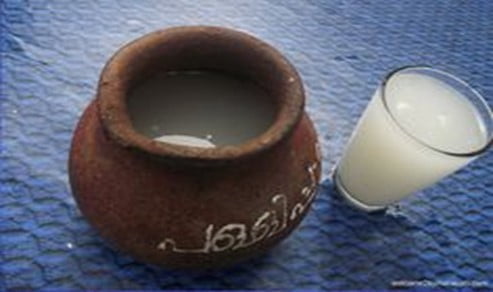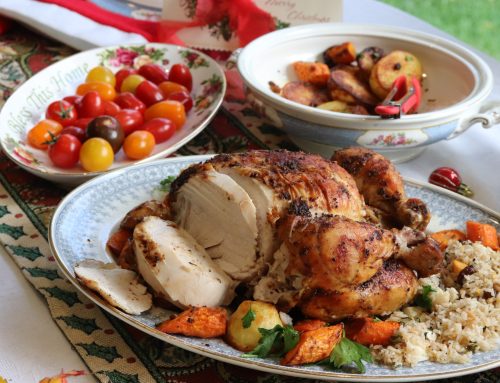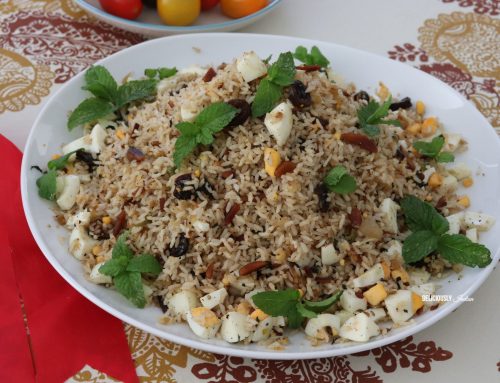Mangalore Sannas
Mangalore Sannas are pillow like bread made by steaming fermented batter of rice, dhal and yeast.Team perfectly with Pork Indad, Pork Bafat or Chicken Roce Curry.

what are sannas?
Sannas (steamed rice and lentil cakes/muffins) are a very popular Mangalorean/Goan Catholic style bread, prepared with a fermented batter of rice, lentils (urad dhal) and a rising agent such as toddy or yeast. Mangalore sannas have a soft and melt in the mouth texture. They are literally white in colour and pair perfectly with any white or red meat curries. They are also delicious served with a light tasting coconut fish curry such as, pomfret curry or sand whiting (kaane) curry. Most often, if there are any leftovers, my son would put his hand up for fried sannas with ghee for his morning breakfast too!! An extremely versatile bread, can also be eaten on its own with a cup of coffee or tea. Yummy!
Growing up in a Mangalorean Catholic home, Sannas are a weekend staple to break away from the normal white bread or chapathies. They are also prepared for any special occasions and during the festive season. Most households would hold a good stock of idli rice and urad dhal at home and making these sannas was a breeze. All we had to do was to source some good quality toddy from local homes who make coconut toddy for sale. Alternatively, toddy could be purchased at a local toddy shop.
what is toddy?
Commonly referred to as 'Coconut Vodka' by international tourists, toddy is a type of palm wine that is produced from the sap of the palm tree in South India. The toddy in Mangalore was from the coconut palm tree. Unlike the Scottish English toddy, which is a warming beverage made from whisky with sugar and hot water, normally used for whiling away the cold winter evenings in Scotland. In Mangalore and South India Toddy is used as a substitute for yeast. Toddy is combined with the rice batter and left to ferment overnight. The batter expands as it ferments making the bread soft when prepared. Most rice breads in India are prepared with toddy although in modern times yeast has taken over.

how to make soft sannas?
Although making sannas seems like a long drawn process, once you have made them, they are not all that difficult. The climate plays an important role in fermenting them. The batter expands better in summer when the mercury rises above 30°C. In saying this, in the winter months, the batter will rise if you warm up the oven and keep the batter in the oven for a few hours, perhaps anything from 3 hours to 10 hours or so. Just ensure the oven is only warm but not hot, as you might end up with one big rice cake otherwise:) I would much prefer a Christmas cake instead:)
Making Sannas is a four way process.
- Soak rice and lentils (urad dhal) for 4 hours minimum
- Blending rice
- Fermenting the batter
- Steaming the sannas. It is handy to have at least 35 moulds to speed up the steaming process.
Sannas are made with either idli rice or a combination of idli rice and raw rice. The sannas in the images on this page are made with a combination of Idli Dosa rice (specially made for making sannas, idlies and dosas) and raw rice. Idli Dosa rice is available in some local Indian grocery stores or for Sydney siders, you can purchase it from Udaya Stores in Liverpool or Wentworthville. Before your start making sannas, you must allow yourself sufficient lead time. Soak your rice and lentils (urad dhal) well, as soaking makes blending easy and the rice needs to be blended to a smooth batter.
You will need a good blender to blend the rice and the lentils (urad dhal), as many commerical blenders available in departmental stores do not blend rice to a smooth batter. I use either my Indian blender called 'Preethi' or my heavy duty 'Breville' blender. As my Indian blender does not hold the entire quantity of rice in one batch, I blend in 3 batches. However, if I use my 'Breville' blender, I am able to blend in one batch and in no time at all. It usually takes only about 5 minutes of blending with one minute intervals. Blend the rice to a smooth batter with the amount of water as called for in the recipe.
When it comes to fermenting the batter, firstly, it is important that the yeast solution is rising vigorously to the top. If not, wait a bit longer till the yeast is frothy and has risen to the top of the tea cup. If it does not, it is possible the yeast has passed its due date and perhaps its time to buy some new yeast. You are almost half way there by this time! Now combine the batter well with the yeast solution as mentioned in the recipe. The batter should be of pouring consistency. If you need to add water, add 50mL at a time till you get the right consistency batter. I usually use my hands to combine the batter, as I know that the batter has combined completely with the yeast solution. You know it has combined when you see tiny bubbles appearing on the surface of the batter. Now tie the vessel with a muslin cloth and leave the batter to ferment in a warm place undisturbed. For those in the Northern Hemisphere, you can warm the oven a little and place the vessel in the oven. Now all that is left is wait, wait and wait!!! Check every two hours to ensure that the batter is fermenting. It starts fermenting after two hours and sometimes in warm weather conditions, it even triples within two hours. It's really a waiting game once you have reached this stage!! Of course, you can get on with doing so many other things in the meanwhile but don't forget to check the status of the batter every two hours. Also, keep the steamer and the moulds ready by greasing the moulds with oil (I prefer to use coconut oil as I love the coconut flavour).
When the batter has risen, it is time to steam them. Half fill an idli steamer (called thondor in Konkani) with water and place on medium heat. Bring the water to a rolling boil. Once the water has come to a rolling boil, place the round perforated lid carefully in the projections within the steamer. Fill the moulds about ¾th of the way up with the fermented batter. Using a slotted spoon, gently lower each mould on top of the perforated lid. Depending on the size of your idli steamer, you are able to steam 8 to 10 sannas in one batch. Steam each batch for 8-10 minutes. Remove each mould carefully with the slotted spoon. Mind your fingers, as the water in the steamer will be at a rolling boil. Invert each mould and place a wet tea towel over the moulds to speed up the cooling process. After about 10 minutes, unmould the sannas and place them in a platter (kurpano is best - a little cane plate) to cool completely. Repeat the same with the rest of the batter ensuring you check the water level after the second batch. Top up with more water, if required.
Once all batches are finished, cool the sannas completely. Store them in an airtight container in the refrigerator for 4 days. Alternatively, you can freeze any leftover sannas as per instructions in the Notes (NOTE 4).
Christmas is a season to have these delicious, soft, pillow like sannas and my Pork Indad Curry. It is a Mangalorean special festive combo not to be missed by Mangaloreans and other nationalities!!
Enjoy these Mangalorean flavours this Christmas, just as much as my family and I do!!!!

Mangalore Sannas
Ingredients
- 500 g Idli Dosa rice
- 180 g raw rice
- 200 g urad dhal split black gram dhal
- 3 tbsp. white sugar
- 1¾ tsp. yeast
- 2¼ tsp. salt or to taste
- 200 mL luke warm water to prepare yeast solution
Instructions
- Wash and soak both types of rice overnight in plenty of water. Soak the urad dhal separately.
- Drain the urad dhal completely and add to a blender. Blend to a fine paste with 150mL of water and transfer to a deep (15-18cm) saucepan. Now drain the rice completely and grind both types of rice to a smooth batter in 2 or 3 batches. Add 175mL of water to each batch when grinding. Transfer the batter to the same saucepan. Wash the blender with 250mL water and add to the saucepan.
- To activate the yeast, combine yeast in 200mL of luke warm water and 2 tsp. sugar in a teacup, till all granules are well dissolved. Allow to stand for 20-30 minutes or until the yeast begins to form vigorously and rises to the top of the teacup.
- Pour the yeast solution into the batter. Add the rest of the sugar (add 1 tbsp. extra for sweeter sannas) and salt. The batter should be of pouring consistency. If you want to add more water, add only 50mL at a time. Using your right hand mix the batter for 3 minutes or until well combined. You will see tiny bubbles appearing on the surface of the batter. Tie the saucepan tightly with a muslin cloth and allow to ferment for 2 to 5 hours in a warm place. Allow more time in cooler weather conditions. Check the batter after two hours. You know the batter has fermented when it has doubled in quantity. In warmer conditions the batter can triple in quantity.
- To steam the sannas, add 3 litres of water into the steamer (thondor) and bring the water to a roaring boil. Grease the idli moulds (gindlas) with oil and fill each mould to ¾th the way up and steam in batches of 8 or 10 until all the batter is exhausted. Check if there is sufficient water in the steamer after the second batch. Steam each batch for 8-10 minutes. Remove the moulds with care, turn them face down and spread a moistened kitchen towel over them to speed up the cooling process. When the moulds have cooled down, remove the sannas gently and store them in an airtight container once cooled completely.
- Serve hot with chicken roce curry or pork sorpotel or pork indad. Jump to Pork Indad Recipe
Notes
- For Sydneysiders, the idli dosa rice is available at Udaya Stores in Wentworthville and Liverpool. It is also available in some local Indian grocery shops but not sure if all local Indian grocery shops sell this rice. If idli dosa rice is not available, then use idli rice in the place of idli dosa rice. The sannas come out good both ways.
- If you want very fluffy sannas then do not stir the batter once it is fermented. However, if you prefer slightly dense sannas then stir the batter once quickly after the batter is fermented.
- For richer and tastier sannas add 200mL of coconut milk in step 4 while you are mixing the batter.
- These sannas are suitable to freeze for up to 3 months in the freezer. To freeze sannas, first make batches of six sannas. Wrap each batch tightly with cling wrap, then with kitchen paper towel, then with foil. To defrost, remove them from the freezer and bring them to room temperature overnight. Warm them up for 1 to 2 minutes in a microwave. Not suitable to re-freeze once defrosted.






